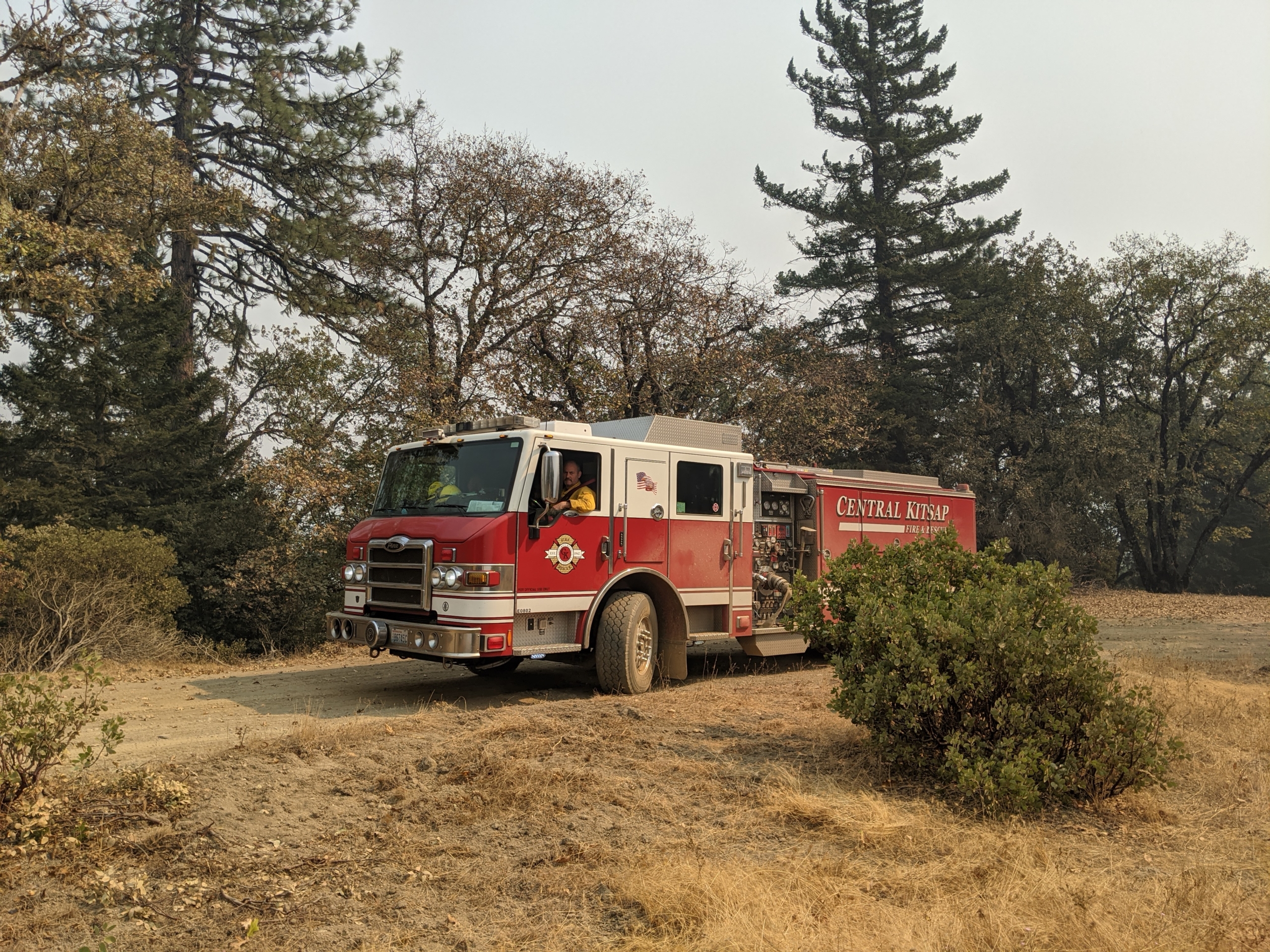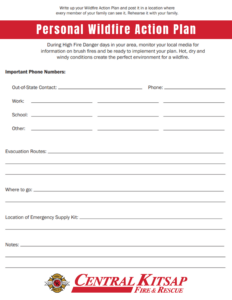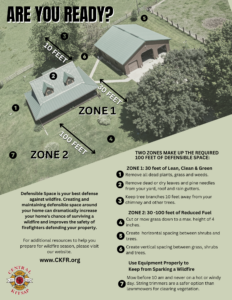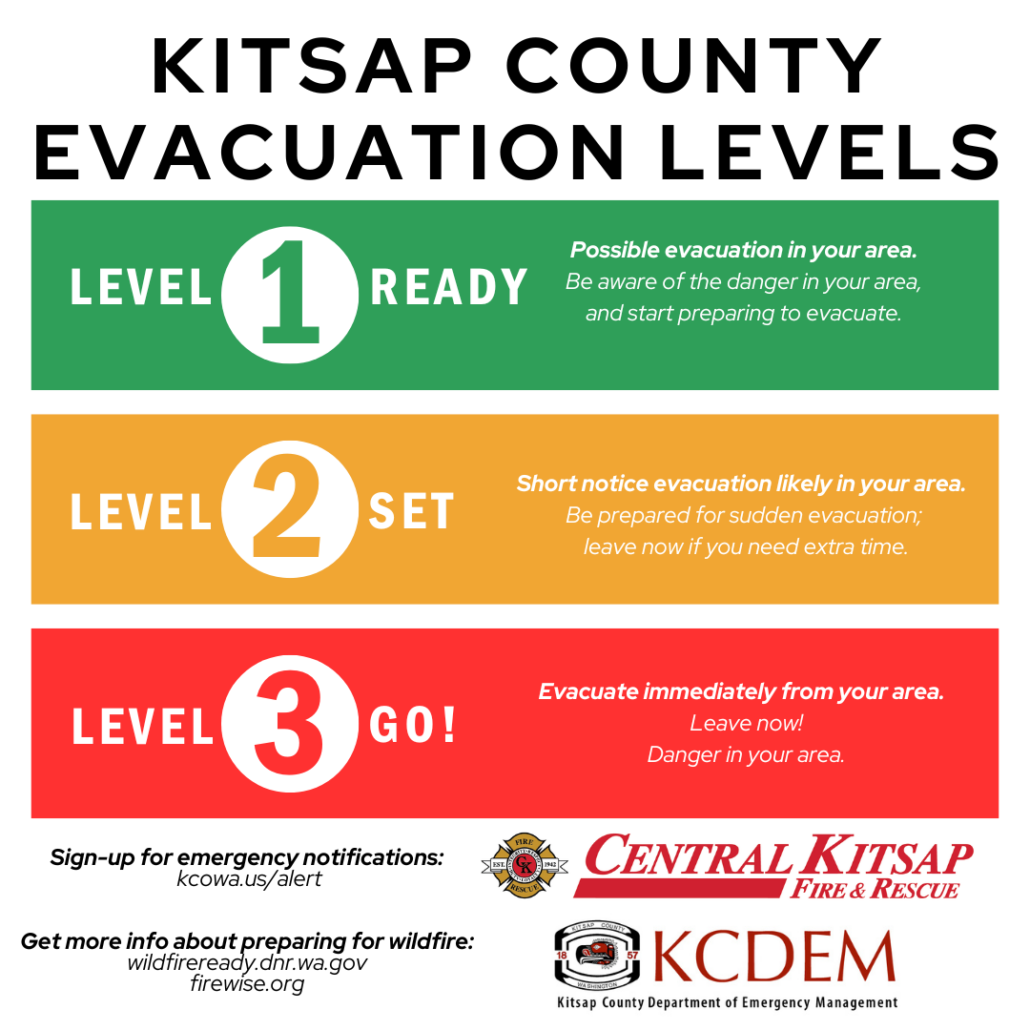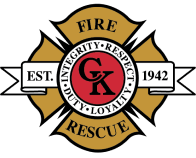Wildfire Preparation and Mitigation
Here are some helpful tips to consider as you prepare your property for wildland fire season.
- Community Connect: Our Community Connect platform allows homeowners to provide vital information to our first responders. The information you provide through this portal is uploaded to emergency personnel when you call 911, and is used to better serve your family and property.
- Access: First, provide and maintain good access to your home and/or shop for allowing firefighting vehicles the ability to get onto your property as well as be able to turn around and leave. Firefighters and apparatus cannot go into areas where there are no access options.
- Address: Firefighters also need to be able to locate your property. Have your address posted on your driveway entrance as well as your house.
- Create a Barrier: Creating a “fire barrier” to homes and outbuildings is critical. Some simple tips to protect structures are as follows:
- Maintain a 30-foot defensible space around your home.
- Keep lawns well-watered.
- Prune or remove combustible trees or shrubs that are too close to your home.
- Clean gutters and roofs of any debris regularly.
- Screen off crawl spaces, attics and decks to keep them free of debris, as well as any flying embers.
- Do NOT store combustibles, such as wood piles, under your deck or near your home.
Kitsap County joins regional “Ready, Set, Go!” evacuation messaging campaign
- “Ready” Phase: Be aware of the danger in your area and start preparing for possible evacuation. Monitor local media and check on neighbors. If you do not already have an evacuation plan or a Go! kit, assemble these now. Conditions can change suddenly, and you may not receive a Level 2 “Be Set” warning before you are ordered to Level 3 “Go!” Prepare both the inside and outside of your home for fire. Leave if you feel unsafe — do not wait for an official evacuation order.
- “Set” Phase: Short notice evacuation likely in your area (Level 2) – Be prepared for sudden evacuation. People who need help or more time to evacuate – people with disabilities, people with small children, people with medical conditions and people with large animals – should evacuate now. Ensure your evacuation plan checklist is complete and your Go! kit is in your vehicle. Stay informed and be aware of alerts from local law enforcement and fire departments. Always remember to leave if you feel unsafe, do not wait for an official evacuation order.
- “Go” Phase: Evacuate immediately from your area (Level 3) – Go now! Danger in your area is current or imminent. Follow directions from law enforcement or fire departments and do not return home until officials have determined it is safe. Notification it is safe to return home will be given as soon as possible.
Residents are encouraged to participate actively in the “Ready, Set, Go!” evacuation campaign. By preparing their homes, accessing informational materials, and staying informed about local emergency updates, individuals can play a vital role in enhancing the safety and preparedness of their communities.
Resource Links
CKFR’s Personal Wildfire Action Plan:
Defensible Space Guide:
Kitsap County Evacuation Levels:

